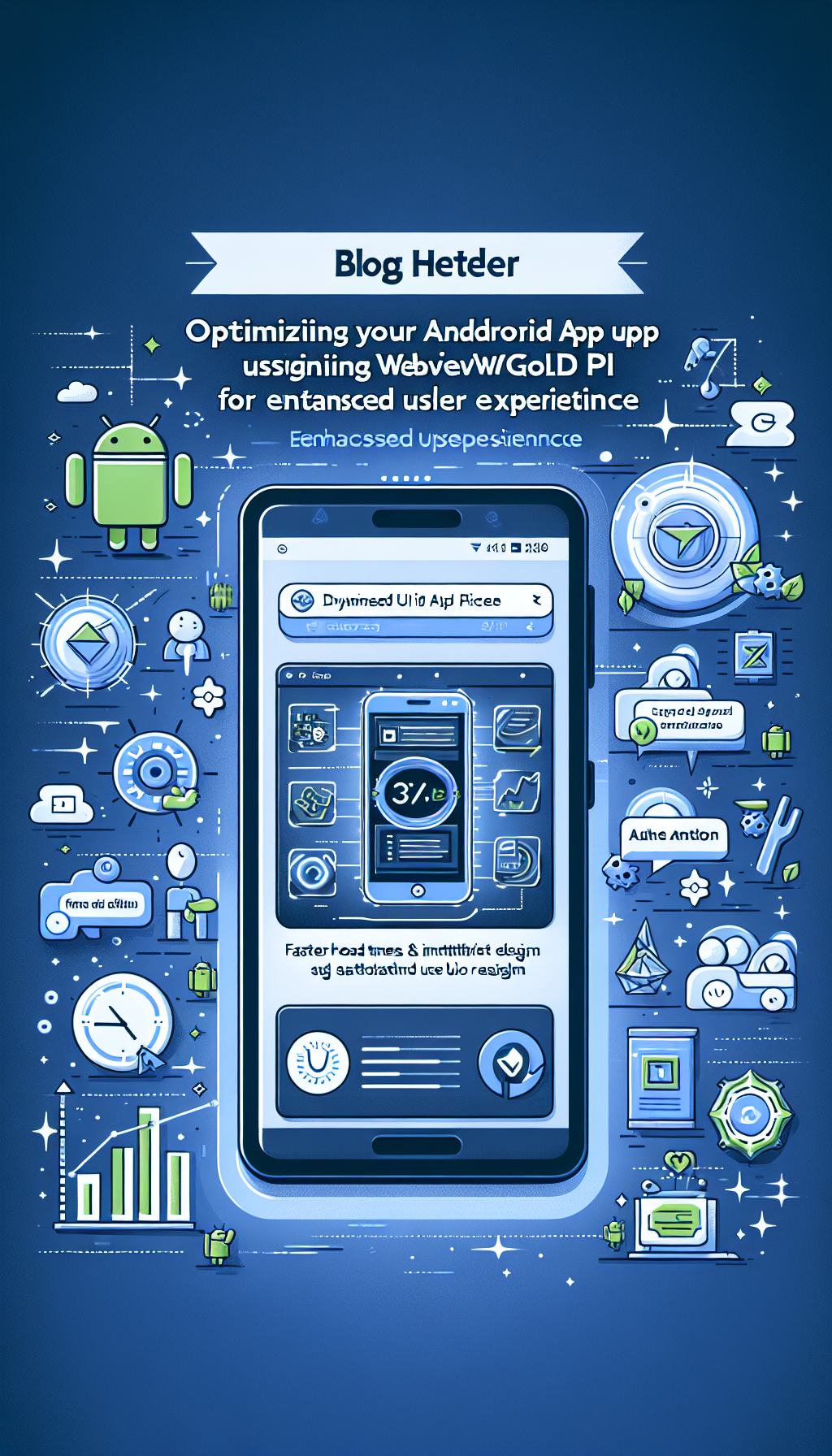
In today’s competitive app market, providing an exceptional user experience is crucial for the success of any Android application. One effective way to achieve this is by leveraging WebViewGold‘s Dynamic UI API. This powerful tool allows developers to optimize their Android apps for enhanced performance and usability. In this blog post, we’ll explore how you can make the most out of WebViewGold‘s Dynamic UI API to elevate your app’s user experience.
What is WebViewGold?
WebViewGold is a robust solution designed to convert websites into apps for Android (and iOS) with ease. It transforms your existing web project into a fully functional mobile application without the need for extensive coding. WebViewGold stands out due to its simplicity and effectiveness – simply input your website URL, and you’re good to go. But that’s not all; it also comes packed with numerous features, including the Dynamic UI API that we’ll focus on in this article.
Understanding the Dynamic UI API
The Dynamic UI API is one of WebViewGold‘s standout features. It offers developers the flexibility to dynamically update and personalize the user interface of their apps. This means you can change elements on-the-fly based on user interactions or other triggers, creating a more interactive and engaging user experience.
Benefits of Using the Dynamic UI API
1. **Enhanced User Engagement**: By allowing real-time changes to the app’s UI, you can keep the content fresh and relevant, capturing users’ attention and encouraging longer app sessions.
2. **Improved Performance**: Dynamically updating UI elements can lead to a smoother and faster app experience, as it reduces the need for constant page reloads and heavy data usage.
3. **Personalization**: Tailor the app’s interface to individual user preferences and behavior, making the experience more personalized and satisfying.
4. **Easy Maintenance**: With the ability to update the UI dynamically, you can quickly implement changes or fixes without requiring users to download a new version of the app.
How to Implement the Dynamic UI API in Your Android App
Getting started with WebViewGold‘s Dynamic UI API is straightforward. Follow these steps to integrate it into your Android app:
1. **Install WebViewGold**: Begin by downloading and installing WebViewGold. The setup process is simple and well-documented, ensuring you’ll be up and running in no time.
2. **Configure Your WebView**: Customize the WebView settings according to your app’s requirements. WebViewGold provides a comprehensive set of options to fine-tune the WebView behavior.
3. **Activate the Dynamic UI API**: Enable the Dynamic UI API from the WebViewGold settings. You’ll find detailed instructions in the documentation to guide you through the process.
4. **Define UI Elements and Triggers**: Specify the UI elements you want to control dynamically and define the triggers for these changes. Triggers can include user interactions, time-based events, or data updates.
5. **Test and Optimize**: Thoroughly test the dynamic UI functionalities to ensure everything works seamlessly. Make any necessary adjustments to optimize performance and user experience.
Best Practices for Using the Dynamic UI API
– **Keep It Simple**: Avoid cluttering the interface with too many dynamic elements. Focus on key areas that will benefit most from real-time updates.
– **Prioritize Performance**: Ensure dynamic updates do not negatively impact the app’s performance. Efficiently manage resources and minimize data load.
– **User Feedback**: Consider adding subtle feedback mechanisms, such as animations or notifications, to inform users of UI changes.
– **Security Considerations**: Ensure that dynamically loaded content is secure and does not expose the app to vulnerabilities.
Conclusion

Leave a Reply